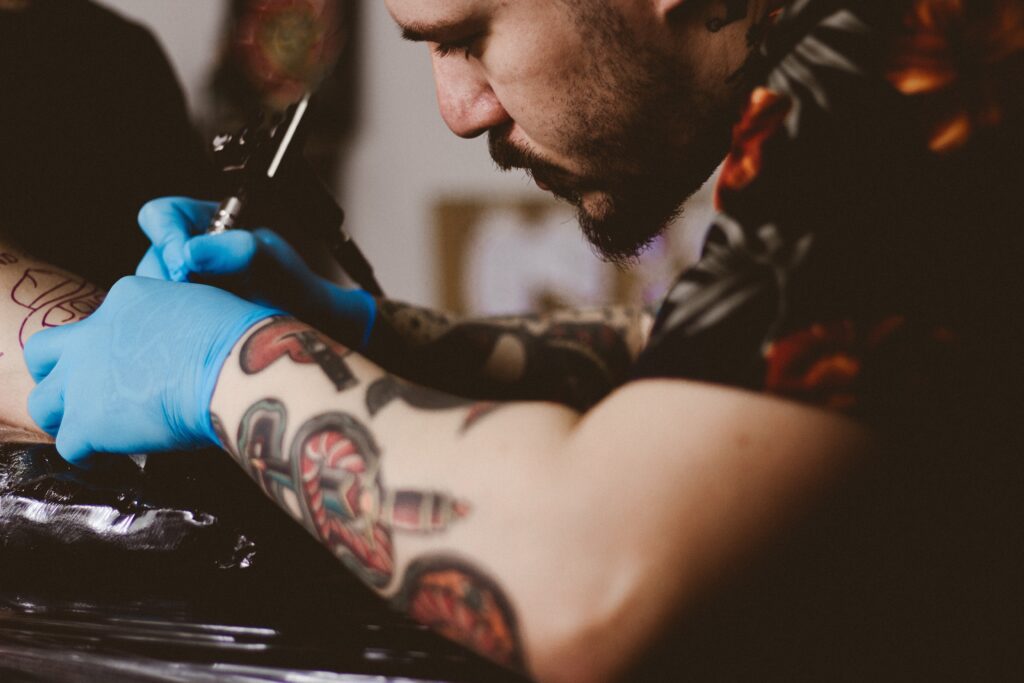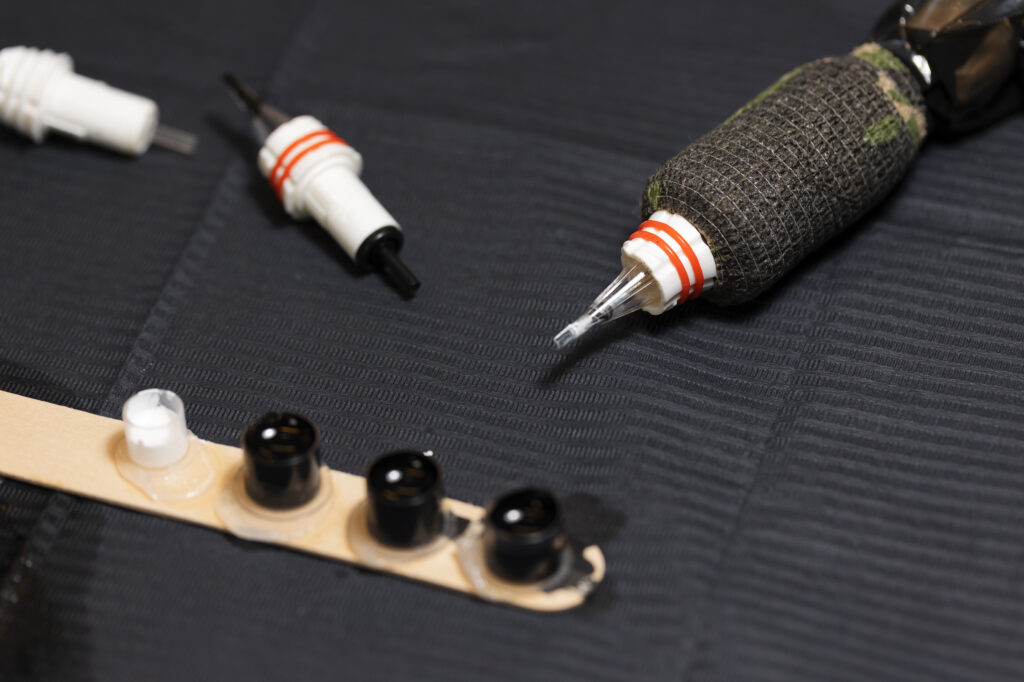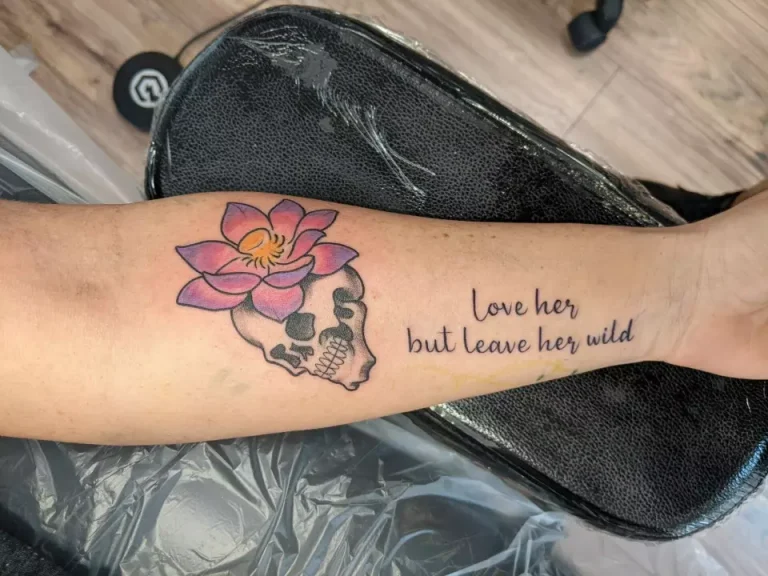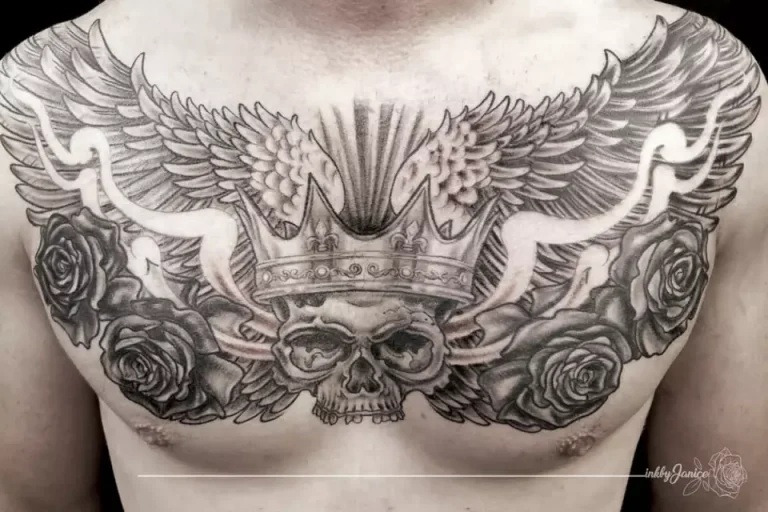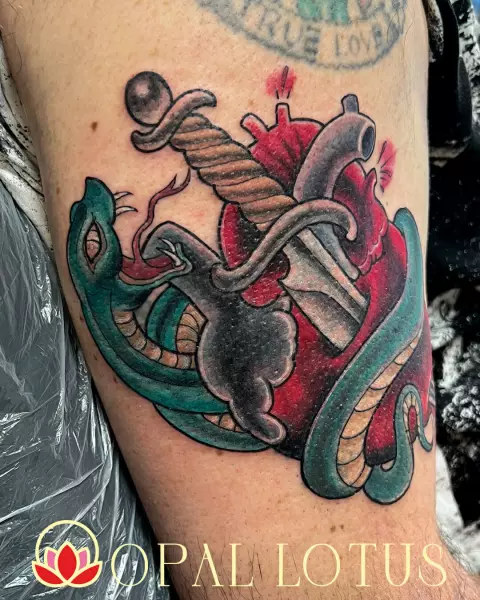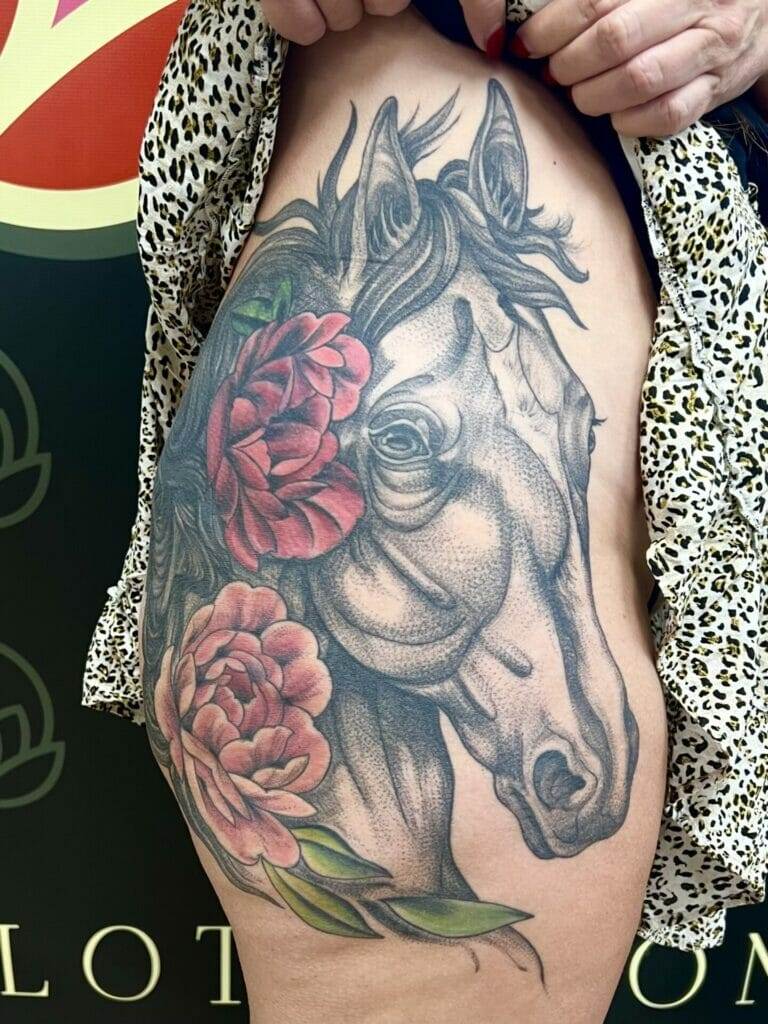The significance of hygiene in the tattooing profession cannot be overstated. Tattoo artists operate in an environment where they are in direct contact with clients’ skin, which can pose various health risks if proper hygiene practices are not followed. The skin is a barrier that protects the body from pathogens, and any breach of this barrier during the tattooing process can lead to infections or other complications.
Therefore, maintaining high standards of hygiene is essential not only for the safety of clients but also for the reputation and credibility of the tattoo artist and the studio. Moreover, a clean and hygienic environment fosters trust between the artist and the client. When clients see that an artist prioritizes cleanliness, they are more likely to feel comfortable and secure during the tattooing process.
This trust is crucial, as it can significantly impact the overall experience and satisfaction of the client. In a world where information spreads rapidly, a tattoo artist’s commitment to hygiene can enhance their reputation and attract more clients who value safety and professionalism.
Key Takeaways
- Tattoo artist hygiene is crucial for preventing infections and ensuring client safety
- Equipment should be thoroughly cleaned and sterilized to prevent the spread of infections
- Proper hand hygiene and glove usage are essential for preventing cross-contamination
- Work areas and surfaces should be regularly disinfected to maintain a clean environment
- Sharps should be safely handled and disposed of to prevent accidental injuries and infections
- Single-use, disposable items should be used to prevent the spread of infections
- Clients should be properly prepared and given aftercare instructions for their tattoos
- Regular health inspections and certifications are important for maintaining a safe and hygienic tattoo studio
Cleanliness and Sterilization of Equipment
The cleanliness and sterilization of equipment are fundamental aspects of tattoo artist hygiene. All tools used in the tattooing process, including needles, ink caps, and machines, must be thoroughly cleaned and sterilized to eliminate any potential pathogens. Autoclaving is a common method employed to sterilize reusable equipment, as it uses high-pressure steam to kill bacteria, viruses, and fungi.
This process ensures that all tools are free from contaminants before they come into contact with a client’s skin. In addition to sterilization, it is crucial for tattoo artists to maintain a clean workspace. This includes regularly cleaning surfaces where equipment is placed and ensuring that all items are organized and free from debris.
A cluttered or dirty workspace can lead to accidental contamination, which can compromise the safety of the tattooing process. By adhering to strict cleanliness protocols, tattoo artists can create a safe environment that minimizes the risk of infection and enhances the overall experience for their clients.
Proper Hand Hygiene and Glove Usage
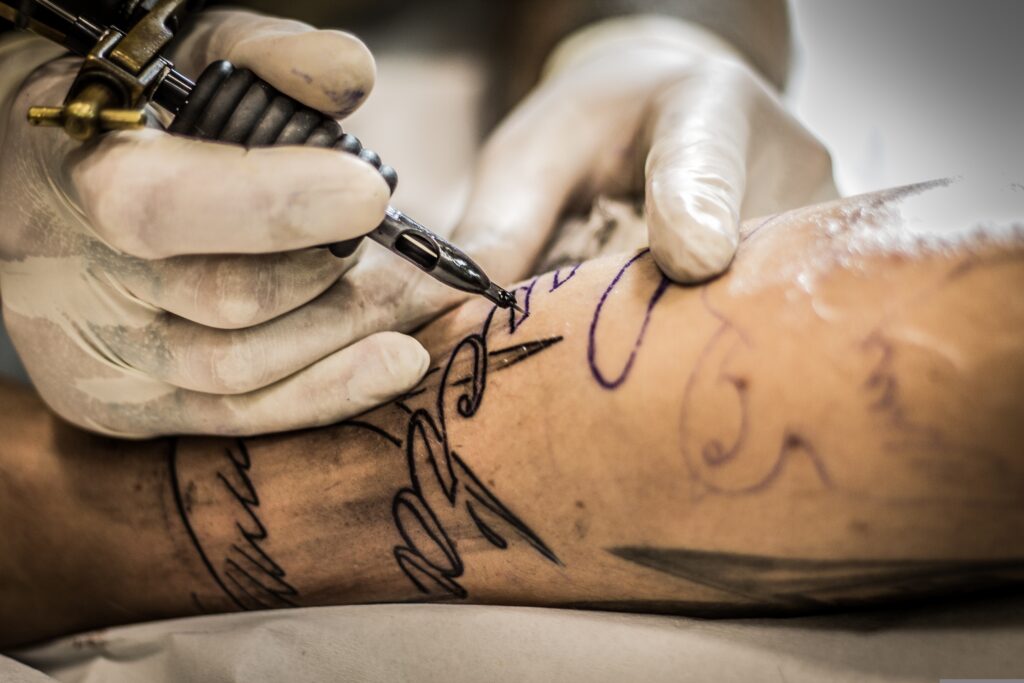

Proper hand hygiene is a cornerstone of infection control in any healthcare setting, including tattoo studios. Tattoo artists must wash their hands thoroughly with soap and water before and after each tattoo session. This practice helps remove any potential contaminants that may have been transferred during previous interactions or procedures.
Additionally, using an alcohol-based hand sanitizer can further reduce the risk of infection, especially when soap and water are not readily available. Glove usage is another critical component of maintaining hygiene during tattooing. Tattoo artists should wear disposable gloves throughout the entire process, from preparing the equipment to applying the tattoo.
Gloves act as a barrier between the artist’s hands and the client’s skin, significantly reducing the risk of cross-contamination. It is essential for artists to change gloves frequently, especially when switching between different tasks or if they become soiled. By adhering to proper hand hygiene and glove usage protocols, tattoo artists can protect both themselves and their clients from potential infections.
Disinfection of Work Area and Surfaces
The disinfection of work areas and surfaces is vital in preventing the spread of infections in a tattoo studio. Before starting any tattoo procedure, artists should clean and disinfect all surfaces that will come into contact with equipment or clients. This includes tables, chairs, and any other areas where tools may be placed.
Using EPA-approved disinfectants ensures that harmful microorganisms are effectively eliminated from these surfaces. Regular cleaning schedules should be established to maintain a consistently hygienic environment. This includes daily cleaning routines as well as more thorough weekly or monthly deep cleans.
By implementing these practices, tattoo artists can create a safe space for their clients while also demonstrating their commitment to hygiene standards. A well-maintained work area not only protects clients but also contributes to a positive atmosphere within the studio.
Safe Handling and Disposal of Sharps
The safe handling and disposal of sharps are critical components of hygiene in tattooing. Needles and other sharp instruments pose significant risks if not managed properly. Tattoo artists must be trained in safe handling techniques to prevent accidental injuries to themselves or their clients.
This includes using needle guards and ensuring that needles are never left unattended or within reach of clients. Once a tattoo session is complete, it is essential to dispose of sharps in designated biohazard containers. These containers are specifically designed to safely contain sharp objects, preventing accidental punctures or injuries during disposal.
Tattoo artists should never attempt to recycle or reuse needles or other sharp instruments, as this practice can lead to serious health risks for both the artist and the client. By following strict protocols for handling and disposing of sharps, tattoo artists can significantly reduce the risk of infection and ensure a safer environment for everyone involved.
Use of Single-Use, Disposable Items
The use of single-use, disposable items is an essential practice in maintaining hygiene within a tattoo studio. Items such as ink caps, razors, and gloves should always be single-use to prevent cross-contamination between clients. By utilizing disposable materials, tattoo artists can ensure that each client receives a fresh set of tools that have not been exposed to any potential pathogens from previous sessions.
In addition to enhancing safety, using disposable items simplifies the cleaning process after each tattoo session. Artists can focus on disposing of used materials rather than spending time cleaning reusable items that may still harbor contaminants. This efficiency not only streamlines operations within the studio but also reinforces the importance of hygiene in every aspect of the tattooing process.
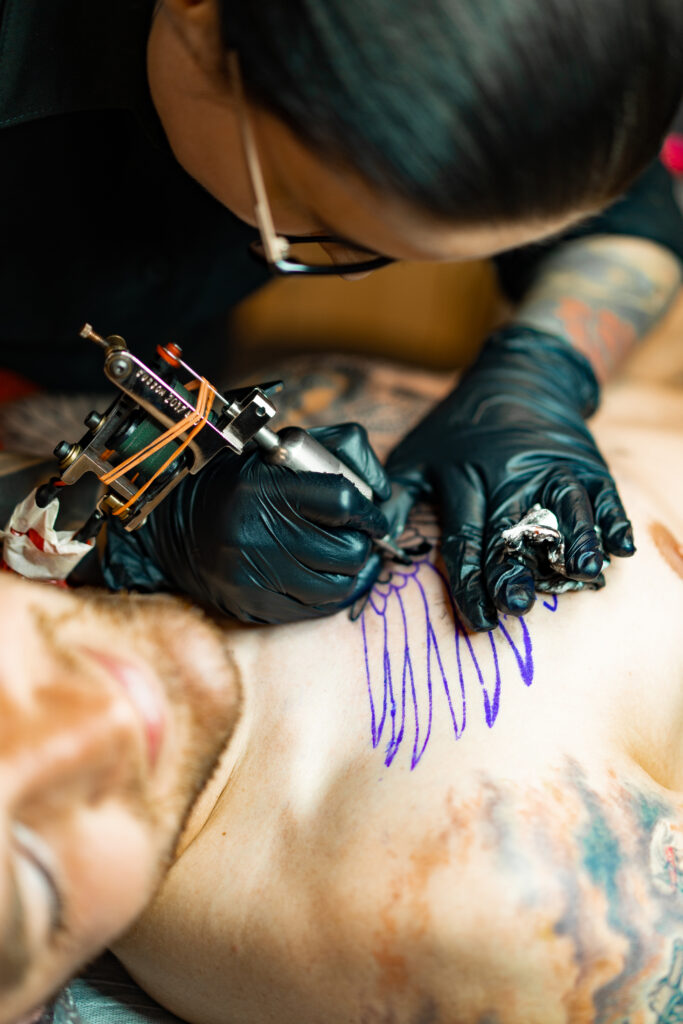
Client Preparation and Aftercare Instructions
Client preparation plays a crucial role in ensuring a safe tattooing experience. Before beginning any procedure, tattoo artists should provide clients with clear instructions on how to prepare for their appointment. This may include recommendations for avoiding alcohol or blood-thinning medications prior to getting tattooed, as well as guidelines for proper skin care leading up to the session.
By educating clients on these aspects, artists can help minimize potential complications during the tattooing process. Aftercare instructions are equally important in maintaining hygiene post-tattooing. Clients should be provided with detailed guidance on how to care for their new tattoos to prevent infections and promote proper healing.
This may include advice on keeping the area clean, applying ointments or moisturizers, and avoiding exposure to sunlight or water for specific periods. By emphasizing the importance of aftercare, tattoo artists can empower clients to take an active role in their healing process while reinforcing their commitment to hygiene.
Importance of Regular Health Inspections and Certifications
Regular health inspections and certifications are vital components of maintaining hygiene standards in tattoo studios. These inspections ensure that studios comply with local health regulations and industry best practices regarding cleanliness and safety protocols. By undergoing routine evaluations by health authorities, tattoo artists demonstrate their commitment to providing a safe environment for their clients.
Certifications from recognized organizations further enhance an artist’s credibility and professionalism. These certifications often require ongoing education about hygiene practices, infection control measures, and new developments in the field of tattooing. By staying informed about best practices through continued education, tattoo artists can ensure that they are providing the highest level of care while adhering to stringent hygiene standards.
In conclusion, maintaining high standards of hygiene is paramount in the tattooing profession. From cleanliness and sterilization of equipment to proper hand hygiene and client aftercare instructions, every aspect plays a crucial role in ensuring a safe experience for clients at Opal Lotus in Houston. By prioritizing these practices, tattoo artists not only protect their clients but also uphold their professional reputation within the industry.
Regular health inspections and certifications further reinforce this commitment to safety, ultimately contributing to a thriving and respected tattoo community.
FAQs
What is a tattoo artist hygiene checklist for clients?
A tattoo artist hygiene checklist for clients is a list of important hygiene practices that clients should look for when choosing a tattoo artist and studio. It includes factors such as cleanliness, sterilization of equipment, and proper disposal of waste.
Why is a tattoo artist hygiene checklist important for clients?
A tattoo artist hygiene checklist is important for clients because it helps ensure their safety and well-being during the tattooing process. By following a hygiene checklist, clients can reduce the risk of infection and other health complications associated with getting a tattoo.
What are some key items on a tattoo artist hygiene checklist for clients?
Some key items on a tattoo artist hygiene checklist for clients include:
– Clean and organized studio environment
– Sterilization of tattoo equipment
– Use of disposable needles and gloves
– Proper disposal of biohazard waste
– Compliance with local health regulations
How can clients verify a tattoo artist’s adherence to hygiene standards?
Clients can verify a tattoo artist’s adherence to hygiene standards by:
– Visiting the studio in person to assess cleanliness and organization
– Asking the artist about their sterilization processes and use of disposable equipment
– Checking for certifications and licenses from health authorities
– Reading reviews and asking for recommendations from other clients
What are the potential risks of not following a tattoo artist hygiene checklist?
Not following a tattoo artist hygiene checklist can lead to various risks for clients, including:
– Infection from contaminated equipment
– Allergic reactions to unsterilized materials
– Transmission of bloodborne diseases such as HIV and hepatitis
– Poor healing of the tattoo and potential scarring
